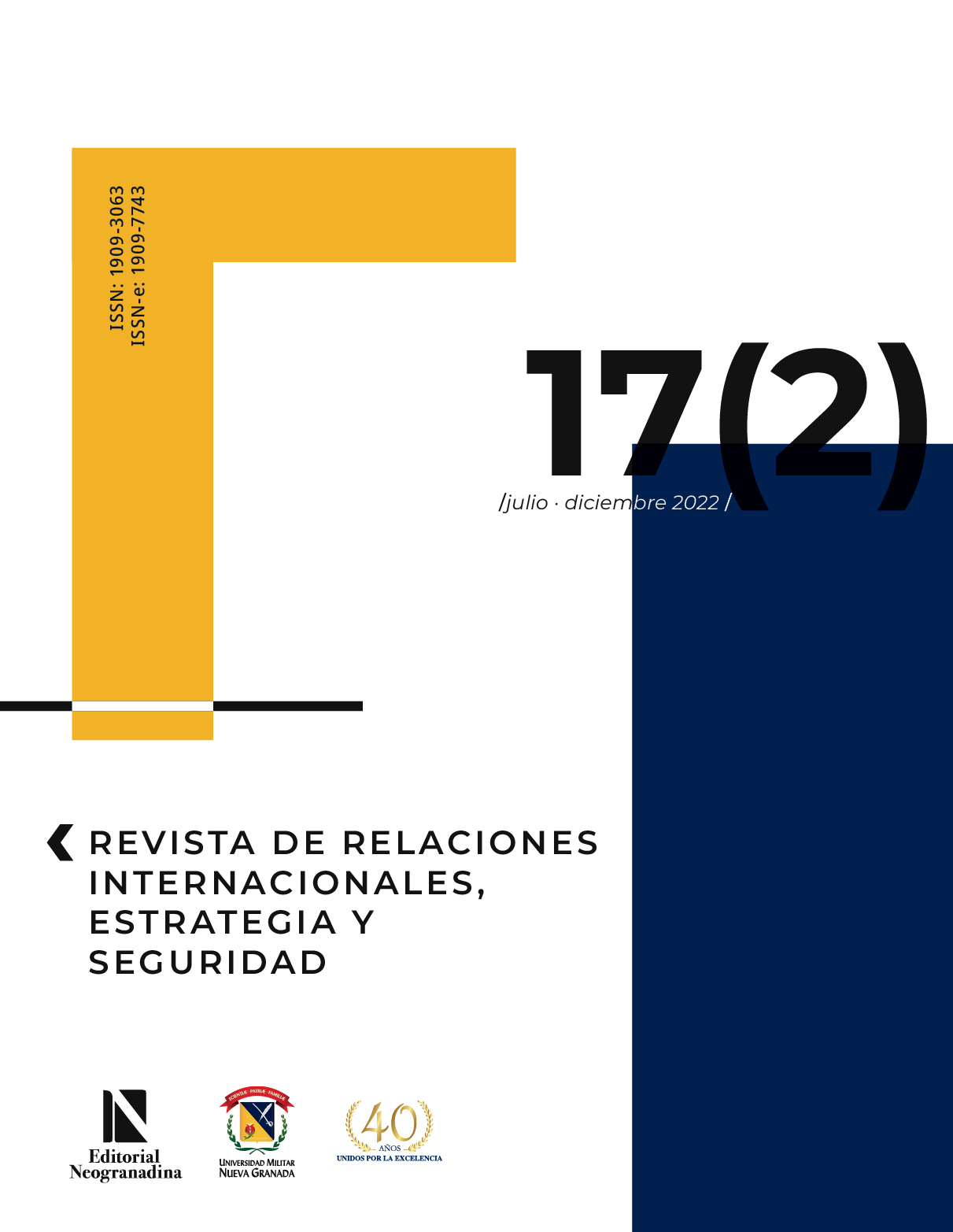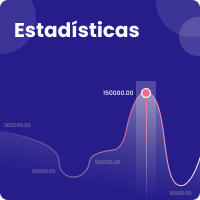External Sector and Growth in Colombia, 1986-2016
A Restricted Growth Approach to the Balance of Payments
Abstract
This article estimates income and price elasticities in foreign trade and their practical application
in Thirlwall's multilateral economic growth model for six of Colombia's main trading partners from 1986 to 2016. By using error correction models, we provide elasticity estimates. The results show that Colombia has a long-term income elasticity of exports that is higher than that of imports, as well as the price elasticity of imports and exports. We conclude that the best policy to promote Colombia's economic growth is to boost exports, as the exchange rate does not offer a strong influence and the benefits of the external sector depend on the trading partner, at least with the studied countries. The empirical estimation of Thirlwall's Multilateral Law shows that balance-of-payments constraints depend on the growth rate of exports and determine the growth rate of the Colombian economy.
Downloads
References
Algieri, B., y Bracke, T. (2007) Patterns of Current Account Adjustment - Insights from Past Experience. ECB Working Paper 762. DOI: http://dx.doi.org/10.2139/ssrn.989726
Araujo, R. A., y Lima, G. T. (2007). A Structural Economic Dynamics Approach to Balance-of-Payments-Constrained Growth. Cambridge Journal of Economics, 31, 755-774. DOI: https://doi.org/10.1093/cje/bem006
Cimoli, M. et al. (2009). Structural Change and the BOP-Constraint: Why did Latin America fail to converge? Cambridge Journal of Economics, forthcoming. DOI: https://doi.org/10.1093/cje/ben060
DANE (2020). Encuesta anual manufacturera (EAM). Departamento Administrativo Nacional de Estadisticas. https://www.dane.gov.co/index.php/estadisticas-por-tema/industria/encuestaanual-manufacturera-enam.
Engle, R. y Granger, C. W. J. (1987). Co-Integration and Error Correction: Representation,Estimation, and Testing. Econométrica, 55(2), 251-276. https://www.jstor.org/stable/1913236 DOI: https://doi.org/10.2307/1913236
Gafar, J. (1995). Some estimates of the price and income elasticities of import demand for three Caribbean countries, Applied Economics, 27(11), 1045-1048. DOI:https://doi.org/10.1080/00036849500000087
Gouvea, R. R., y Lima, G. T. (2010). Structural change, balance-of-payments constraint, and economic growth: evidence from the multisectoral Thirlwall's law. Journal of Post Keynesian. Economics, 33(1), 169-204. http://www.jstor.org/stable/20798386 DOI: https://doi.org/10.2753/PKE0160-3477330109
Gouvea, R. R., y Lima, G. T. (2013). Balance-of-Payments-Constrained Growth in a Multisectorial Framework: a panel data investigation. Journal of Economic Studies (Bradford), 40, 240- 254. DOI: https://doi.org/10.1108/01443581311283691
Guilherme R. y Landreth McCombie, J. S. (2016) Impacts Of Developing Countries Growth On Natural Resource Exporters: A Bop Constrained Growth Model. Anais do XLIII Encontro Nacional de Economia [Proceedings of the 43rd Brazilian Economics Meeting] 097, ANPEC - Associação Nacional dos Centros de Pós-Graduação em Economia [Brazilian Association of Graduate Programs in Economics]. https://ideas.repec.org/p/anp/en2015/097.html
Hernández, J. N. (2005). Demanda de importaciones para el caso colombiano: 1980-2004. En Banco de la República. Banco de la República, Subgerencia de estudios económicos, Departamento de Programación e Inflación. https://www.banrep.gov.co/docum/ftp/borra356anterior.pdf DOI: https://doi.org/10.32468/be.356
Houthakker, H. S., y Magee, S. P. (1969). Income and Price Elasticities in World Trade. The Review of Economics and Statistics, 51(2), 111-125. DOI: https://doi.org/10.2307/1926720
Johansen, S. (1988). Statistical Analysis of Cointegration Vectors. Journal of Economic Dynamics and Control, 12(2-3), 231-254. DOI:https://doi.org/10.1016/0165-1889(88)90041-3
Johansen, S. (1991). Estimation and Hypothesis Testing of Cointegration Vectors in Gaussian Vector Autoregressive Models. Econometrica, 59(6), 1551-1580. DOI: https://doi.org/10.2307/2938278
Johansen, S., y Juselius, K. (1990). Maximum Likelihood Estimation and Inference on Cointegration- with Applications to the Demand for Money. Oxford Bulletin of Economics and Statistics, 52(2), 169-210. DOI: https://doi.org/10.1111/j.1468-0084.1990.mp52002003.x
McCombie, J. (1997). On the Empirics of Balance-of-Payments-Constrained Growth. Journal of Post Keynesian Economics, 19(3), 345-375. DOI: https://doi.org/10.1080/01603477.1997.11490116
McCombie, J. S. L. (1993). Economic Growth, Trade Interlinkages, and the Balance-of-Payments-Constraint. Journal of Post Keynesian Economics, 15(4), 471-505. http://www.jstor.org/stable/4538361. DOI: https://doi.org/10.1080/01603477.1993.11489956
Misas, M., Ramírez, T., y Silva, L. (2001). Exportaciones no tradicionales en Colombia y sus determinantes. Borradores de Economia 178. Banco de la Republica de Colombia. https://www.banrep.gov.co/docum/ftp/borra178.pdf. DOI: https://doi.org/10.32468/be.178
Nell, K. (2003). A Generalized Version of the Balance-of-Payments Growth Model: an application to neighbouring regions. International Review of Applied Economics, 17(3), 249-267. DOI: https://doi.org/10.1080/0269217032000090478
Nilsson, L. (2002). Trading relations: is the roadmap from Lomé to Cotonou correct? Applied Economics 34, 439-452. DOI:https://doi.org/10.1080/00036840110046007
Nilsson, L. (2007). Comparative Effects of EU and US trade policies on developing country Exports, [Ebook]. En Y. Bourdet, J. Gullstrand, K. Olofsdotter (eds.) The European Union and Developing Countries: Trade, Aid and Growth in an integrating world. https://books.google.com.co/books?hl=es&lr=&id=Oj0mcpAlG4cC&oi=fnd&pg=PA49& dq=Nilsson+L.+(2005).+Comparative+Effects+of+EU+and+US+trade+policies+on+deve loping+country+Exports,+Brussels:&ots=c9MDNPnC3P&sig=lAFuHpFF9B65prb3CVVWw_Hh28M#v=onepage&q&f=fale
Orcutt, G. H. (1950). Measurement of Price Elasticities in International Trade. The Review of Economics and Statistics, 32(2), 117-132. DOI: https://doi.org/10.2307/1927649
Palley T. (2003). Pitfalls in the Theory of Growth: An application to the balance of payments constrained growth model, Review of Political Economy, 15(1), 75-84. DOI: https://doi.org/10.1080/09538250308441
Pesaran, M. H., y Shin, Y. (1995). An Autoregressive Distributed-Lag Modelling Approach to Cointegration Analysis. En S. Strøm (ed.), Econometrics and Economic Theory in the 20th Century: The Ragnar Frisch Centennial Symposium (pp. 371-413). Cambridge University Press. DOI: https://doi.org/10.1017/CCOL521633230.011
Pesaran, M. H., Shin, Y. y Smith, R. J. (1996). Testing for the Existence of a Long-run Relationship. Cambridge Working Papers in Economics 9622, Faculty of Economics, University of Cambridge. https://ideas.repec.org/p/cam/camdae/9622.html
Phillips, P., y Bruce E. (1990). Statistical Inference in Instrumental Variables Regression with I(1) Processes The Review of Economic Studies, 57(1), 99- 125. DOI: https://doi.org/10.2307/2297545
Ramírez, J., y Flórez, M. (2017). Elasticidades ingreso y precios de las exportaciones no tradicionales en Colombia 1991-2015. https://colaboracion.dnp.gov.co/CDT/Estudios%20Econmicos/456.pdf
Romero, J. P., y McCombie, J. S. L. (2016). The Multi-Sectorial Thirlwall's Law: evidence from 14 developed European countries using product-level data. International Review of Applied Economics, 30, 301-325. https://doi.org/10.1080/02692171.2015.1102207
Senhadji, A., y Montenegro, C. (1999). Time Series Analysis of Export Demand Equations: A Cross-Country Analysis. IMF Staff Papers, 46(3), 259-272. https://www.imf.org/external/Pubs/FT/staffp/1999/09-99/pdf/senhadji.pdf DOI: https://doi.org/10.2139/ssrn.882723
Thirlwall, A. P. (1979). The balance of payments constraint as an explanation of international growth rate differences, Banca Nazionale Del Lavoro Quarterly Review, 128, 45-53. https://ideas.repec.org/a/psl/bnlaqr/197901.html
Thirlwall, A.P. (2012). Balance of Payments Constrained Growth Models: History and Overview. En E. Soukiazis, P.A. Cerqueira, (eds) Models of Balance of Payments Constrained Growth (pp. 11-49). Palgrave Macmillan. DOI: https://doi.org/10.1057/9781137023957_2
Zuccardi, I. (2002). Demanda por importaciones en Colombia: una estimación. Desarrollo y Sociedad, 49, 129-154. https://revistas.uniandes.edu.co/doi/pdf/10.13043/dys.49

Copyright (c) 2022 Revista de Relaciones Internacionales, Estrategia y Seguridad

This work is licensed under a Creative Commons Attribution-NonCommercial-NoDerivatives 4.0 International License.











